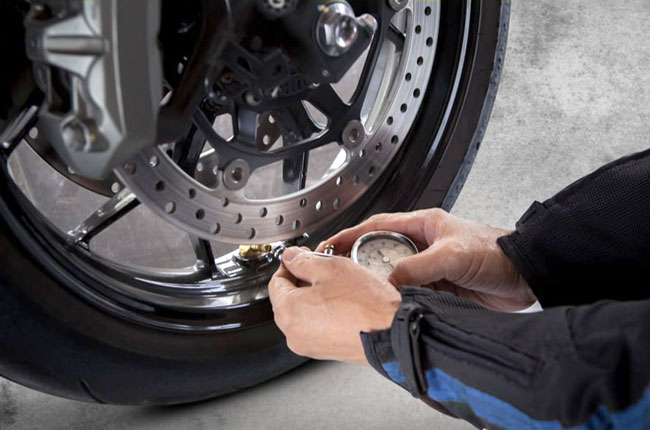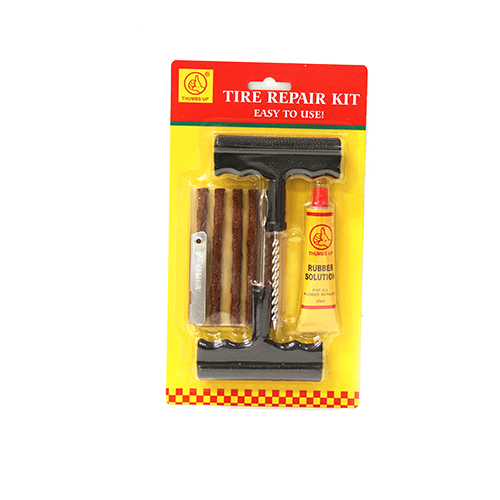Proper tire pressure is one of the most critical safety factors for motorcycle riding, especially on the varied terrain around the Southern Highlands. Whether you're cruising the Hume Highway or navigating the winding roads through Bowral and Moss Vale, correct tire pressure affects everything from handling to fuel economy. This simple 5-minute check could prevent a dangerous blowout and should be done weekly.
Why Tire Pressure Matters for Safety
Your tires are the only contact point between your motorcycle and the road. In the Southern Highlands, where we experience temperature variations and diverse riding conditions, tire pressure directly impacts:
- Handling and stability on corners and wet roads
- Braking distance in emergency situations
- Tire wear patterns and overall tire life
- Fuel economy and engine performance
- Risk of blowouts especially at highway speeds
What You'll Need for Pressure Checking
Essential Equipment:
- Accurate tire pressure gauge (digital or analog)
- Portable air compressor or access to air pump
- Valve cap removal tool (if needed)
- Clean cloth for wiping valve stems
Recommended Tools:
- Digital pressure gauge: Most accurate readings
- Portable 12V compressor: Convenient for roadside adjustments
- Tire pressure monitoring system: For real-time monitoring
Time Required: 3-5 minutes per tire
Step-by-Step Tire Pressure Check
Step 1: Check When Tires Are Cold
- Measure pressure before riding or at least 3 hours after riding
- Temperature affects pressure - hot tires give false high readings
- Ideal time is early morning before the day heats up
- Never check immediately after highway riding
Step 2: Find Your Recommended Cold Pressure
Where to Look:
- Owner's manual: Most accurate specifications
- Swing arm sticker: Usually located on the chain guard
- Tire sidewall: Shows maximum pressure (not recommended pressure)
- Manufacturer website: Model-specific recommendations
Typical Pressure Ranges:
- Sport bikes: 32-36 PSI front, 36-42 PSI rear
- Cruisers: 28-32 PSI front, 32-40 PSI rear
- Adventure bikes: 30-35 PSI front, 35-42 PSI rear
- Touring bikes: 32-39 PSI front, 39-46 PSI rear
- Motocross Bikes: 13-15PSI front, 13-15PSI rear
Step 3: Remove Valve Cap and Check
Checking Process:
- Remove the valve cap and keep it safe
- Press gauge firmly onto valve stem
- Read measurement immediately
- Check reading twice for accuracy
- Replace valve cap to prevent dirt entry
Reading Your Gauge:
- Digital gauges: Direct PSI reading
- Analog gauges: Read where needle points
- Some gauges show both PSI and BAR measurements

Step 4: Adjust Pressure if Needed
If Pressure is Low:
- Add air in small increments (2-3 PSI at a time)
- Check pressure frequently while inflating
If Pressure is High:
- Press valve stem center briefly to release air
- Check pressure after each small release
- Add air back if you release too much
Step 5: Record and Monitor
Keep Track Of:
- Date of check
- Pressure readings for both tires
- Any adjustments made
- Temperature when checked
Tire Pressure Guidelines by Riding Conditions
Street Riding (Normal Conditions):
- Use manufacturer's recommended pressure
- Check weekly or before long rides
- Adjust for passenger or luggage weight
Highway/Touring:
- Increase pressure by 2-4 PSI for sustained high speeds
- Check more frequently on long trips
- Consider temperature changes with altitude
Off-Road/Adventure Riding:
- Reduce pressure by 3-5 PSI for better traction
- Lower pressure increases tire footprint
- Re-inflate to street pressure before highway riding
Track/Performance Riding:
- Follow track day guidelines (usually higher pressure)
- Check pressure when tires are hot during sessions
- Adjust based on tire temperature and wear patterns
Temperature Effects on Tire Pressure
General Rule: Tire pressure changes about 1 PSI for every 10°C temperature change
Southern Highlands Considerations:
- Winter mornings: Pressure drops significantly overnight
- Summer heat: Pressure increases during the day
- Mountain riding: Altitude changes affect pressure
- Seasonal adjustments: Check more frequently during temperature swings
Signs Your Tires Need Attention
Check Pressure Immediately If:
- Bike feels unstable or wobbly
- Steering feels heavy or unresponsive
- Tire looks visibly low or flat
- Unusual wear patterns appear
Regular Monitoring Needed:
- Pressure drops consistently between checks
- One tire loses pressure faster than the other
- Seasonal temperature changes
- Before and after long rides
Tire Pressure Maintenance Tips
Best Practices:
- Check pressure weekly, not just before long rides
- Use the same gauge consistently for accuracy
- Keep a portable compressor for emergencies
- Check spare tire pressure if you carry one
What to Avoid:
- Checking pressure on hot tires
- Using gas station gauges (often inaccurate)
- Ignoring small pressure losses
- Riding on visibly low tires
Recommended Tire Care Products
Essential Tools:
- Digital tire gauge: Accurate to 0.5 PSI
- Portable compressor: 12V models for roadside use
- Tire repair kit: For emergency puncture repairs
Tire Repair Kit
Advanced Options:
- TPMS sensors: Real-time pressure monitoring
- Nitrogen inflation: More stable pressure retention
- Professional gauge: For track day precision
Living in the Southern Highlands? Our Mittagong showroom stocks quality tire gauges, portable compressors, and tire care products. Visit us for expert advice or same-day pickup of your tire maintenance tools.
When to Seek Professional Help
DIY Friendly: Regular pressure checks and minor adjustments Professional Service Required:
- Tire mounting and balancing
- Puncture repairs
- Valve stem replacement
- Persistent pressure loss diagnosis
Tire Safety for Southern Highlands Riding
Local Considerations:
- Check pressure before mountain rides (altitude affects pressure)
- Monitor closely during winter months (temperature swings)
- Inspect for damage after gravel road riding
- Increase checking frequency during touring season
Emergency Preparedness:
- Carry portable compressor for remote area riding
- Know locations of service stations with air pumps
- Keep tire repair kit for puncture emergencies
What's Next?
Tire pressure checking should become part of your weekly pre-ride routine. While you're checking tires, also inspect tread depth, sidewall condition, and look for embedded objects or damage.
Need help choosing the right tire pressure gauge or portable compressor? Use the live chat below for expert advice from our team, or visit our Mittagong showroom at U1-2, 217 Old Hume Highway.
Call us on 1300 202 543 for professional tire service, mounting, or if you discover any concerning tire conditions during your inspection.
If you need assistance from our expert technicians you can contact us on the number above or you can also book a service online for your motorcycle by clicking below.
Related Maintenance Articles:
- How to Clean and Lube Your Motorcycle Chain
- How to Check Your Motorcycle Brake Pads
- Coming Soon: "Pre-Ride Safety Checklist for NSW Conditions"
Remember: Proper tire pressure is essential for safe riding. When in doubt about tire condition or persistent pressure loss, always consult a professional.


